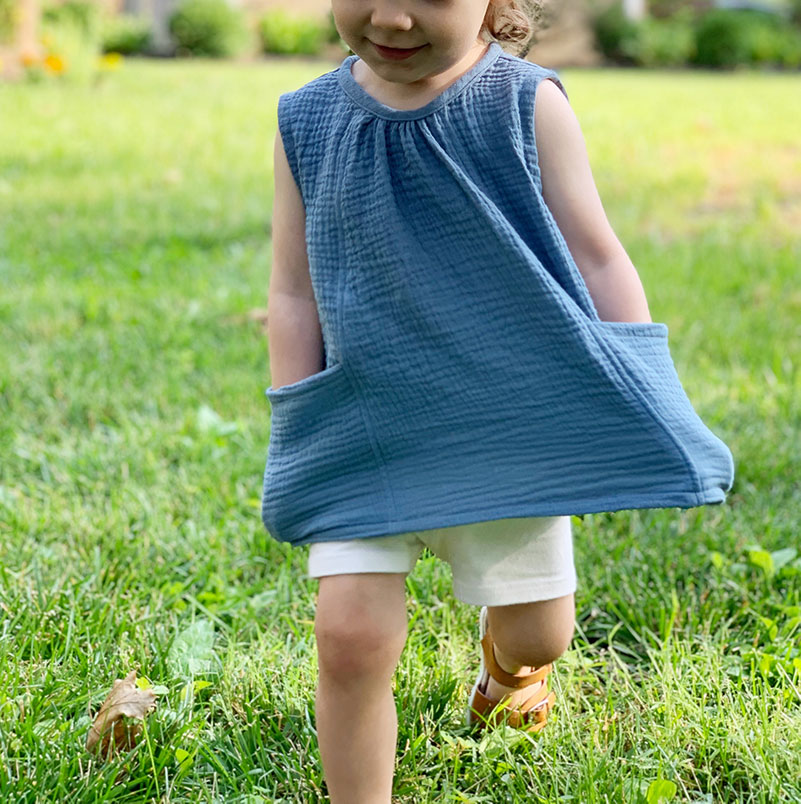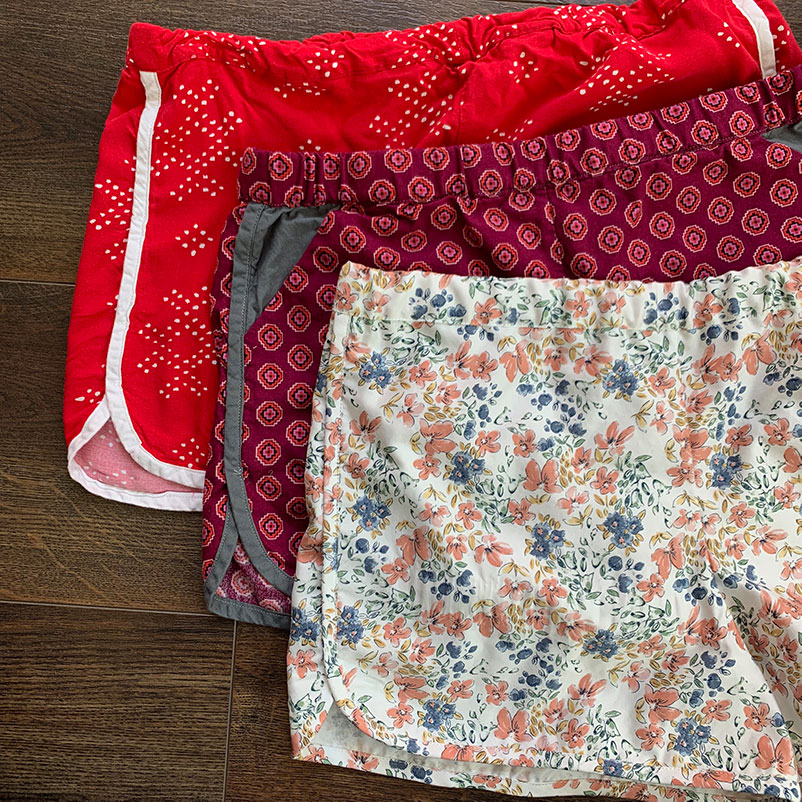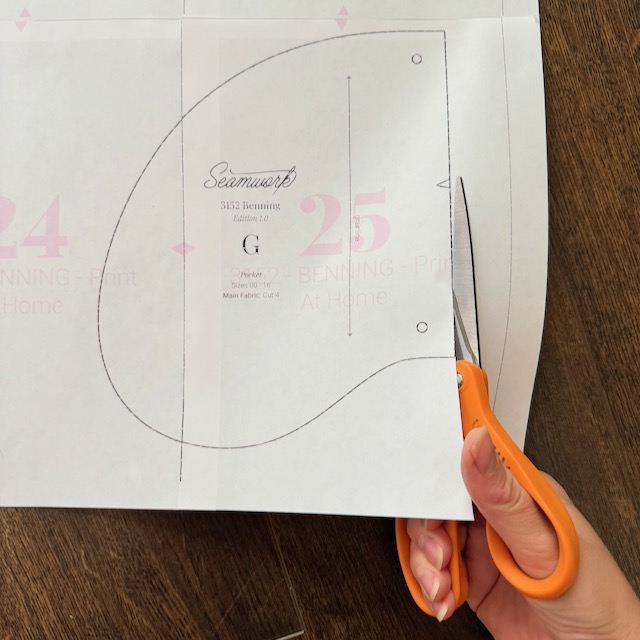6 Ways to Use Leftover Thread
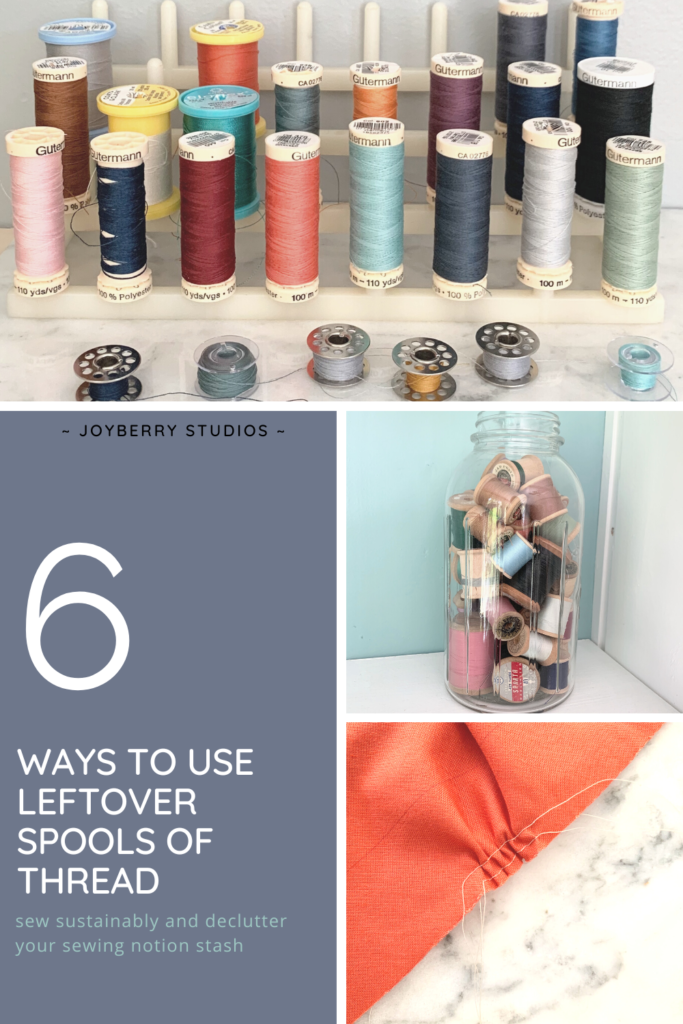
4 WAYS TO USE UP LEFTOVER THREAD – SUSTAINABLE SEWING
If you’re into sewing you’ve most likely purchased thread to specifically match a fabric for a project. I do it all the time! Gutterman thread comes in a dazzling rainbow of colors and hues. You’re almost always likely to come close to perfectly matching your fabric. This unfortunately means that I have dozens of leftover thread spools from previous projects.
After you finish a few projects, you may find that you have spools of thread piling up in your stash. I do not advocate for tossing perfectly good thread just because the intended project is finished. Instead, there are great ways to utilize these leftover threads.
Here are SIX great ways to use up those leftover spools of thread!
1 – Zig Zag Stitch Fabric Edges Before Prewashing
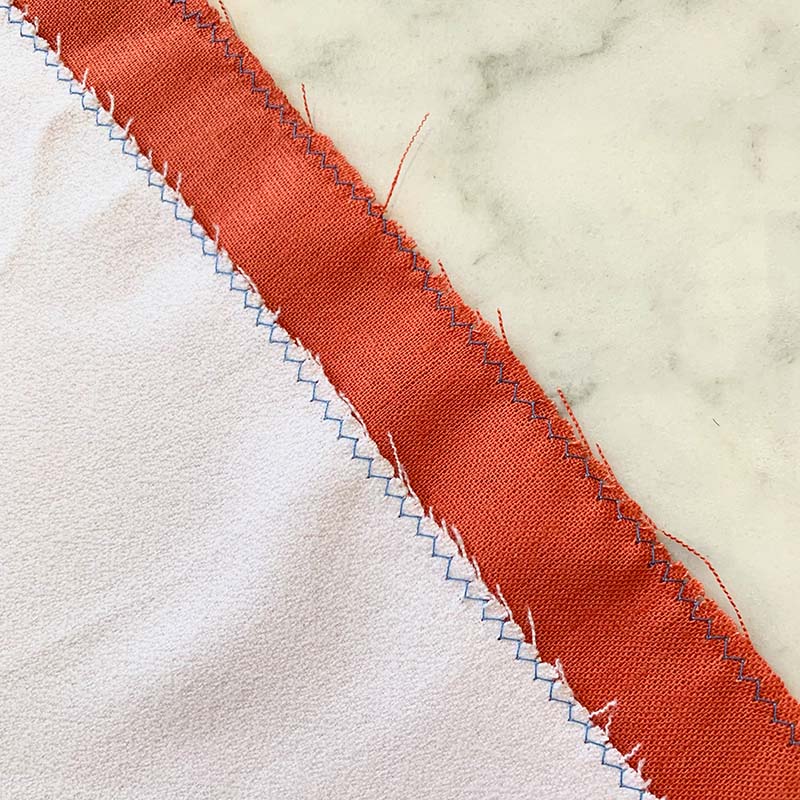
If you are going to sew something you will wash (clothes, small bags, etc) it is important that you wash the fabric before you sew with it. Fabric often will shrink during the first or second wash. It would be horrible to sew a shirt and only have it shrink awkwardly the first time you wash it!
When you wash fabric with raw edges the friction and tumbling of the washer and dryer can cause those edges to fray. If you want to avoid pulling string balls out of your dryer and saving some length on your fabric, try zig zag stitching the raw edges before you prewash.
2 – Finishing Seams
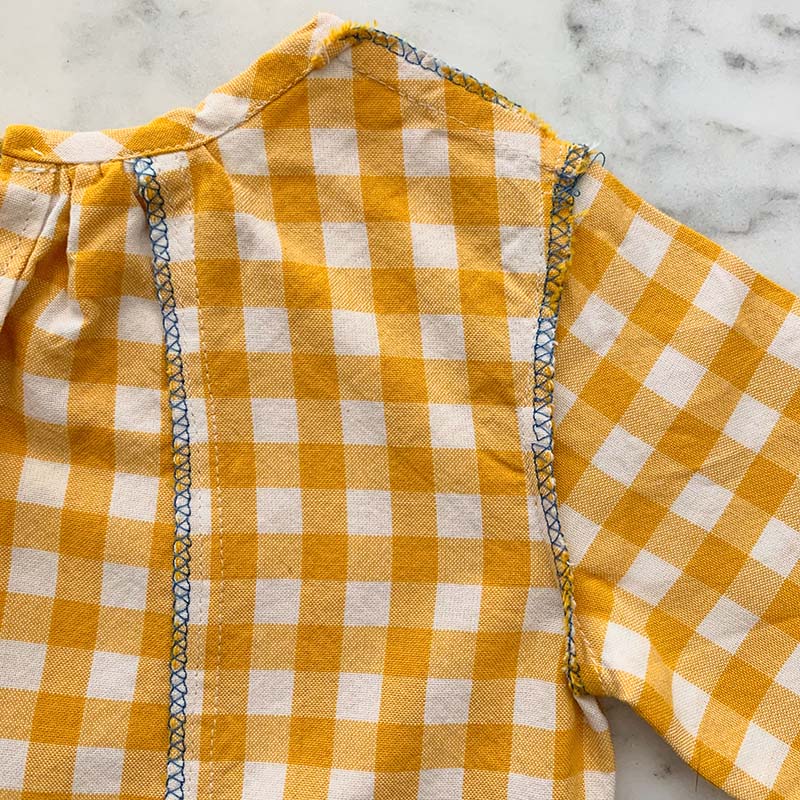
When sewing garments, directions typically tell you to finish the seams. (Check out my blog post on four different ways to finish seams without a serger.) Finishing the seams prevents the fabric from fraying during wearing and washing and will extend the life of the garment.
Finishing seams isn’t just for garments. I highly suggest finishing seams on all projects. It extends the life of the pillows, headbands, bags, or whatever you are sewing!
My favorite way to finish seams is with a contrasting thread and overcast stitch. I think it’s a fun way to add a bit of interest to the garment. It’s almost like a little secret detail.
3 – Gathering Fabric
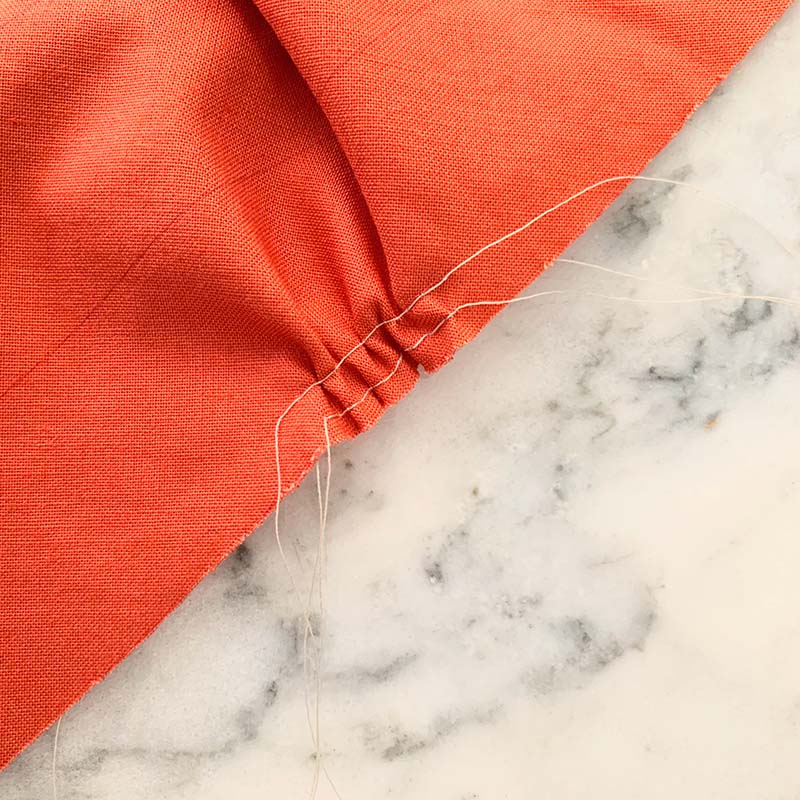
Some garments like a simple gathered skirt or a Wiksten Smock have gathers. Gathers require you to sew gathering stitches.
Gathering stitches are long loose stitches with the thread tails left long in order to scrunch together the fabric and hold it while sewing a seam. You want to use a contrasting thread when sewing gathering stitches. The stitches are pulled out after you sew the seam, which makes them a perfect use for leftover thread!
4 – Use a “Close Enough” Matching Thread
As I’ve sewn more and more I’m beginning to realize that perfectly matching thread is not entirely necessary.
I am more lenient when sewing seams where the thread can only be seen if the seam is stretched and stressed. I also frequently use a “matching” thread in the needle and neutral (white or black) thread in the bobbin if I’m doing top stitching and the thread matching is more noticeable. (Is it because I’m saving thread or just lazy and don’t want to wind another bobbin?)
Yes, sometimes the bobbin thread may peek out of the fabric or the fabric may be stressed and you can see the mismatched thread. But no one is inspecting my clothes that closely.
5 – Add a Pop of Color
Thread is a great way to add a pop of color to a garment! You can use a contrasting thread when top stitching, reinforcing a button hole, or bar tacks.
Top stitching thread will stand out depending on a variety of different factors. If you have a loosely woven fabric and a small stitch length, top stitching is less likely to stand out.
Button hole reinforcement stitches and bar tacks will stand out from the heavy stitches. Just be sure that for button holes the thread will also coordinate with the buttons!
6 – Display Leftover Thread
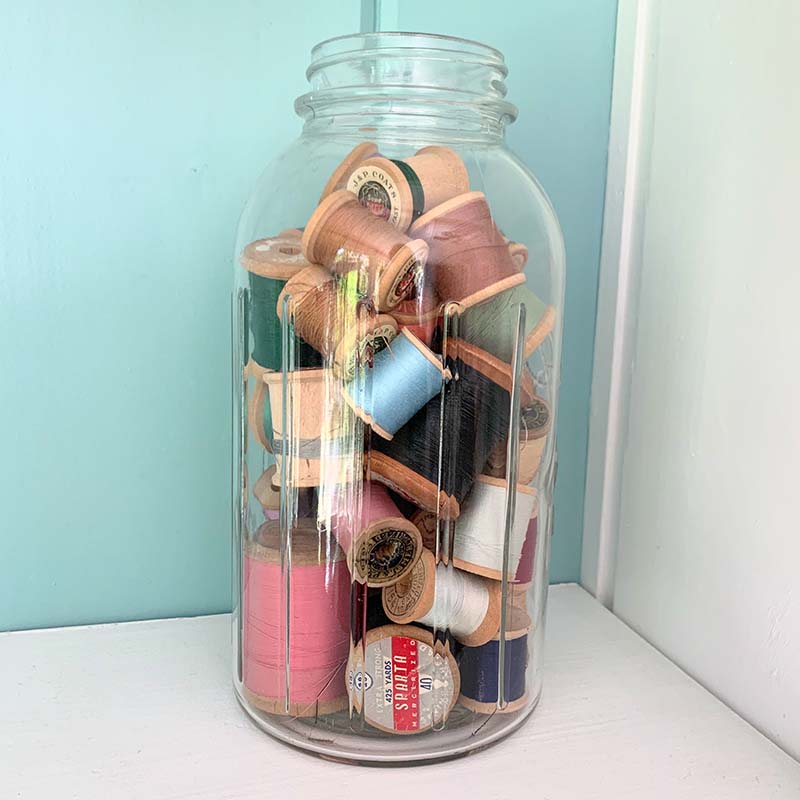
This is the least practical way to utilize leftover thread, but it is one of my favorites. I inherited vintage thread from my grandmothers. I love the look of the wooden spools and thinking about what projects the threads were used for.
Unfortunately, as thread ages it becomes weak and can easily break, which doesn’t make it ideal for sewing with. So instead I display it on a shelf.
Even if you don’t have vintage thread, you can display your half used spools in a glass jar. It is a great way to remember your previous projects. This is also a great storage method as well, you can always pull out spools as you use them.


